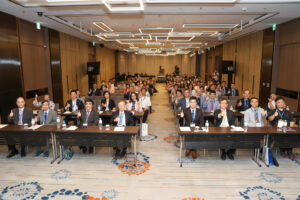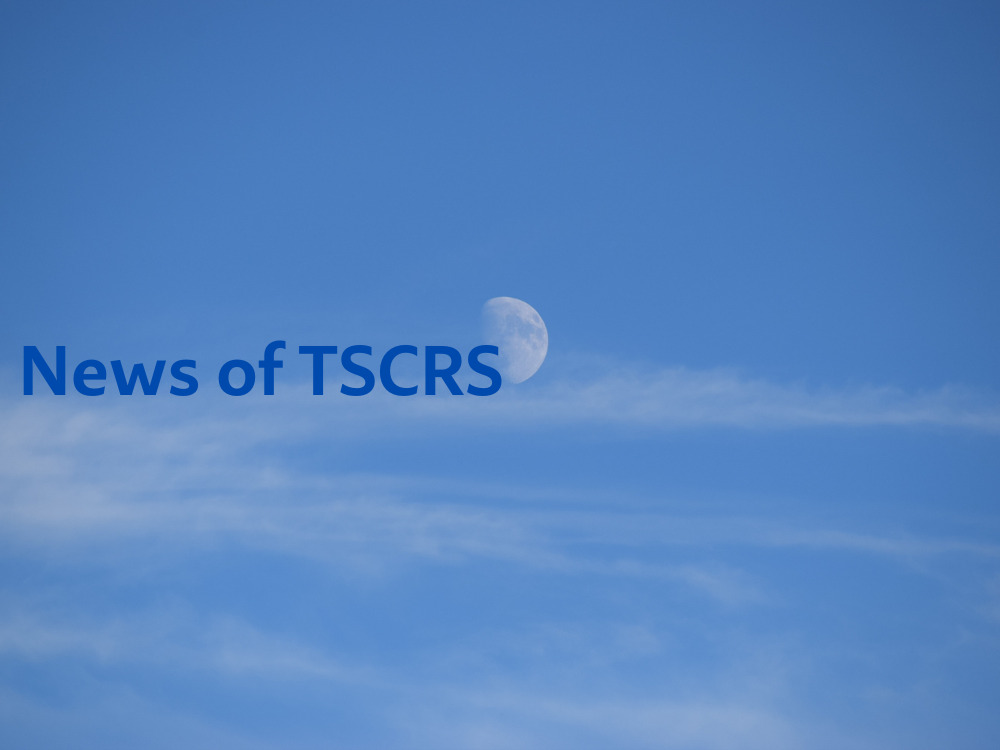The long-awaited 17th Taiwan Society of Cataract and Refractive Surgeons (TSCRS) Annual Meeting finally kicked off with a wonderful congratulating clip from many world-renowned ophthalmologists. Participating doctors began to pour into the check-in venue, Marriott Taipei, in the weekend morning of the first day of the event. The size of the crowd was much larger than we expected! Four months prior to the event, we had already established a joint committee of directors, supervisors and the secretary general office to start planning the details of the annual meeting. From the theme of the meeting, line-up of speakers, inviting guests, on-site management of the meeting, design of the official website, specifications for the surgical video competition, to traffic flow of the members, content of the luncheon speeches, press room, etc., many things were discussed and simulated extensively in numerous meetings. As a result, we were able to maintain the quality of the meeting even though the number of participants exceeded our initial expectation.
The high standard of this event represents my academic vision and expectation of all TSCRS members to establish an international-standard ophthalmologist profession in Taiwan. The official website is available in both English and Chinese, while the printed materials of the meeting are mainly in English. All speakers were giving lectures in English as well. Through a live stream, renowned experts from India, Germany, Spain, Mainland China, Australia and Singapore came together and simultaneously discussed academic issues, allowing participants to overcome the constraint of distance and interact with the masters. The meeting featured the latest 3D microsurgery teaching system. For two full days, a dedicated teaching room was provided for young surgeons wishing to learn 3D microsurgery, or for members wishing to refine their surgical skills. They were able to learn from the instructors directly. By wearing 3D glasses, doctors could practice with simulated eyeballs. Whereas, instructors would observe the surgery under a stereo camera on the microscope and coach the surgical steps one-on-one in real time. The program was fully booked well in advance of the meeting. Participants were impressed by the virtual experience and indicated that it was truly a rare experience not available at previous ophthalmology conferences.
Although the epidemic had eased, in addition to the quality of experience of the guests and attendees, we also paid special attention and exercised caution in epidemic prevention and security measures. In addition to complying with the government policy on epidemic prevention measures, we also provided a live-stream conference for speakers and guests who were unable to attend the event in person due to the epidemic. All video and live streaming equipment was of the highest standard. There was also a separate press room where speakers could send a summary of their presentations to the press. The measure was aimed to maximize the value add of the meeting in the face of the epidemic.
The meeting also featured a cross-disciplinary panel of glaucoma and retina experts to discuss refractive surgical techniques, and solutions to complications, thereby expanding the scope of the subject much further. In this meeting, the subjects covered included advanced surgical examinations, presbyopia treatment, principles and options of intraocular lens design in cataract surgery, excimer laser and ReLEx SMILE (Refractive Lenticule Extraction, Small Incision Lenticule Extraction) surgical techniques, femtosecond laser cataract surgery, and the latest bladeless and laser surgical methods. Even the latest research on semi-automated robotic arm surgery for cataract surgery was also included. Other subjects comprised the use of blue light and materials science in injury prevention by professors from Tsinghua University, handling of medical disputes by lawyers, and business management by the CEO of a health care chain company. In particular, a doctor who attended the meeting said to me, “The sessions were so varied and exciting, that I want to attend every single one of them. Unfortunately, I can’t.”
In addition to the live 3D surgical simulated teaching, the meeting also featured the first 3D surgical demonstration, which was a high-end simulated teaching method provided by an international pharmaceutical company in collaboration with TSCRS. In the main lecture hall, every attendee wore special glasses and watched surgical instructions on a 3D screen intently. This allowed the participating surgeons to feel as if they were on the scene, analyzing the situation with the surgeon in charge and learning how to resolve the situation with finesse.
We also organized the first surgery video competition of TSCRS to elevate the fullness of the program, allowing exchanges of clinical experience between doctors of different specialties and seniority in different disciplines. Our hybrid audio-visual meeting was similar to surgery video symposiums held at other major conferences abroad. It was also in line with surgery demonstration video competitions held in international conferences such as APACRS, ASCRS and ESCRS. Such competitions are held to create a virtuous cycle of stimulating learning. Not only can young members gain invaluable experience watching these videos, experienced surgeons can also strengthen interactions by guiding the editing and scoring of the videos. We also plan to launch a video section for members on the TSCRS official website after the meeting to provide continuing education materials for physicians. As for the section for the general public, we plan to provide more content in the future that can be used for shared decision-making in patient care.
The aim of the meeting was to provide an opportunity for ophthalmologists to exchange ideas and keep their academic knowledge and technical skills up to date. After taking over as the Chairperson of TSCRS, despite financial and resource constraints, we have managed to achieve such a great result in merely four months. I would like to thank all members of TSCRS for their participation, directors, supervisors and the secretary general office for holding extensive discussions during the short preparation period, as well as the founding members and the industry for their support in making the meeting a success. We are already in the process of planning for next year’s meeting, and we hope that it will be even more comprehensive and in line with our vision than this year.
_220710_1-300x169.jpg)




